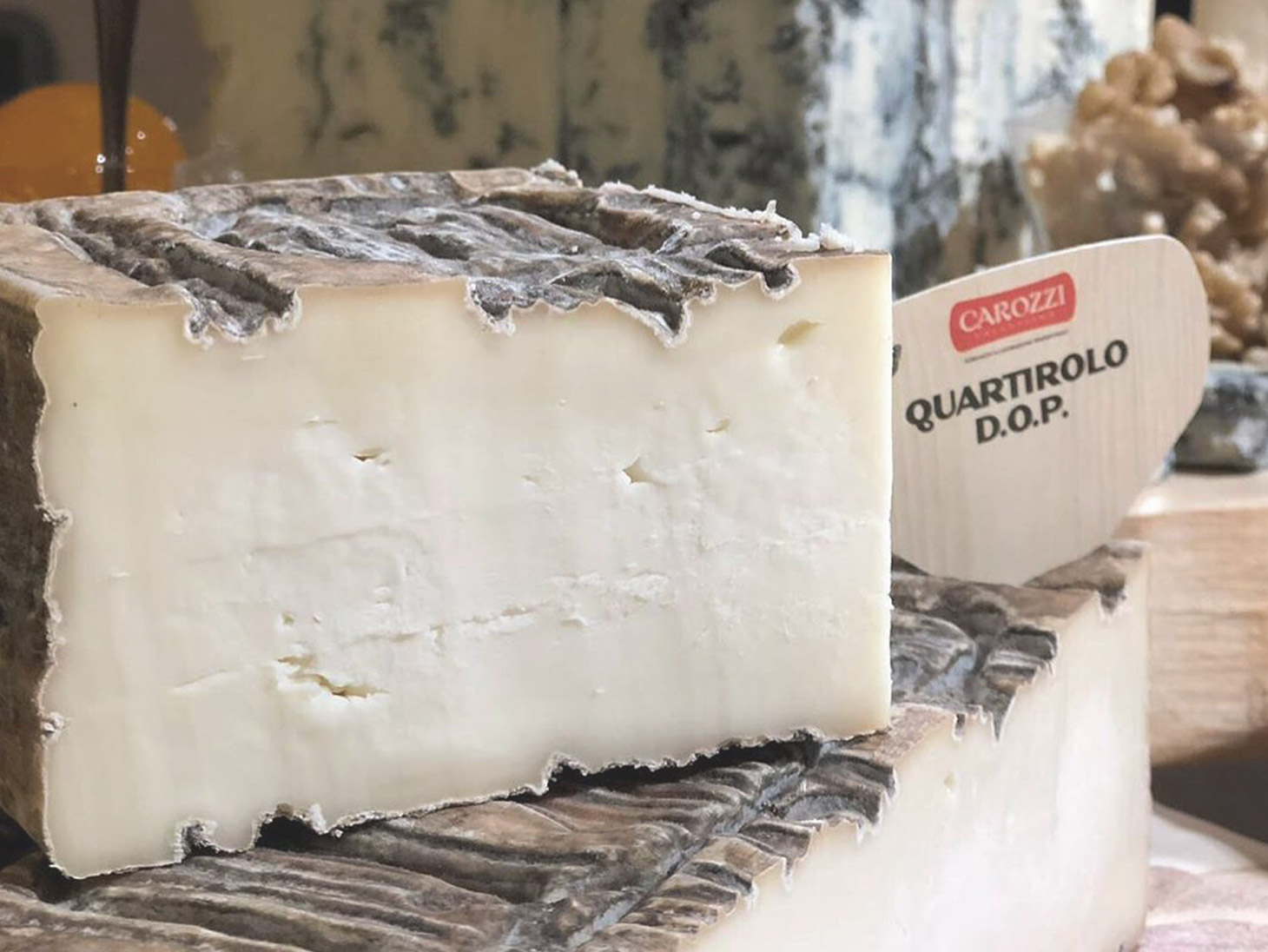It arrives at last, to mark the end of a season and the return to the valley from mountain pastures.The fourth summer pasture has made history by giving life to an excellent cheese. Let me tell you why...
Let’s start by defining “fourth pasture”.
The summer of cheese production, which runs from April-May to September-October, can be distinguished by four different types of grass cuttings and therefore types of feeding for animals.
The first and part of the second are characterized by the presence of fresh grass that is more digestible and energetic and gives a high value of protein in milk. In the remaining part of the second pasture and in the third pasture there is a riper grass with more fiber and cellulose, thus increasing the presence of fat in milk.
Arriving to the fourth and last cut of grass, called “Quartirola” grass (quarto means fourth in Italian).
We can call it lucky, this fourth summer pasture, as it comes at a time which is autumnal but brings with it the evolution of the whole summer. This is the pasture with the influence of the last, remaining flowers and blades of grass, where the tired cows are fed in transhumance while returning to the valley. Traditionally, the cheese that was produced from this fourth pasture, was Quartirolo.
Of course today the production of Quartirolo is no longer limited to a single pasture, but history has left us its processing technique.
According to the PDO disciplinary, Quartirolo can be a raw milk cheese or a pasteurized one, produced with selected starter or just with milk-starter, i.e. adding to the milk a part of milk that has matured a greater bacterial load. Once the rennet is added and the curd is formed, the curd is then broken in two steps until it is reduced to the size of a hazelnut.
After putting the curd into the square molds, losing the serum, it passes to the so-called “stewing” phase.
This occurs in rooms with controlled temperature and humidity and lasts 24 hours, within which the cheeses are turned 4/5 times.
At this point we have produced the Lombard Quartirolo and its seasoning begins assisted by periodic crust washing: 5 days for the “fresh” appellation and at least 30 days for the “seasoned” one.
The difference between the two aging is incredible: the fresh cheese is clearly similar to the Greek Feta, whereas the longer aged cheese evolves with an impact not only visual and consistency, but above all of flavor, which is much more complex and rich in herbaceous notes and hint of toasted.
In the glass
The time of sangria is now almost behind, but don’t worry: where something is missing, a new possibility is always created. From the Fromagerie L’Amuse in the Netherlands, our friend and tea expert Betty Koster offers this unusual Quartirolo pairing:
“No Oolong! Quite bitter! But Darjeeling is fabulous. The tea enhances the earthy notes in the cheese. Slight saltiness disappears. A warm homely feeling will take you with this combination, leaving you with a clean mouth and slight tanin like (astringent) mouthfeel. Quite exciting!!”
In the plate
Quartirolo in Lombardy is used in many recipes for first courses, as a component of the sauce or as a stuffing in pasta. For this pairing I wanted to combine our cheese with a seasonal fruit: grapes. My proposal is to cook barley in a “risotto” way, with grapes, Quartirolo and chopped pistachio. The perfumes that are released in the creaming when the quartirolo is added have notes of dried fruit and butter. These notes become very interesting when combined with the sweetness and slight astringency of the grapes and the final flavor of the pistachios.
In the field
A fruit that was prized at the time of the Roman Empire, figs are the direct combination from the field. Figs, with their sweet and warm flavor, will accompany the herbaceous and toasted notes of the Quartirolo very well.
One more tip
The Quartirolo must be understood and helped to grow, because even though it is a young cheese, it can give so much satisfaction in a salad. I advise you to wait for the Quartirolo to mature, to live its fermentation experiences such as becoming creamy under its rind and chulky in the center. Leave it for a while and let it reach at least 60/75 days of seasoning: I assure you that the result will amaze you.
Matteo De Santi
Export Manager




